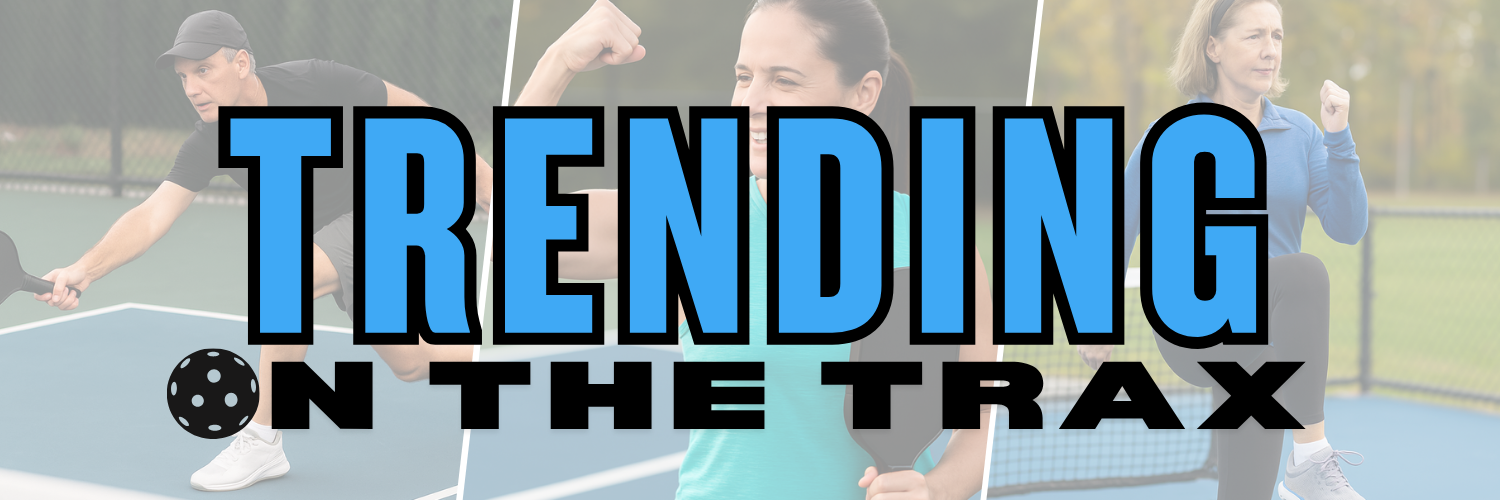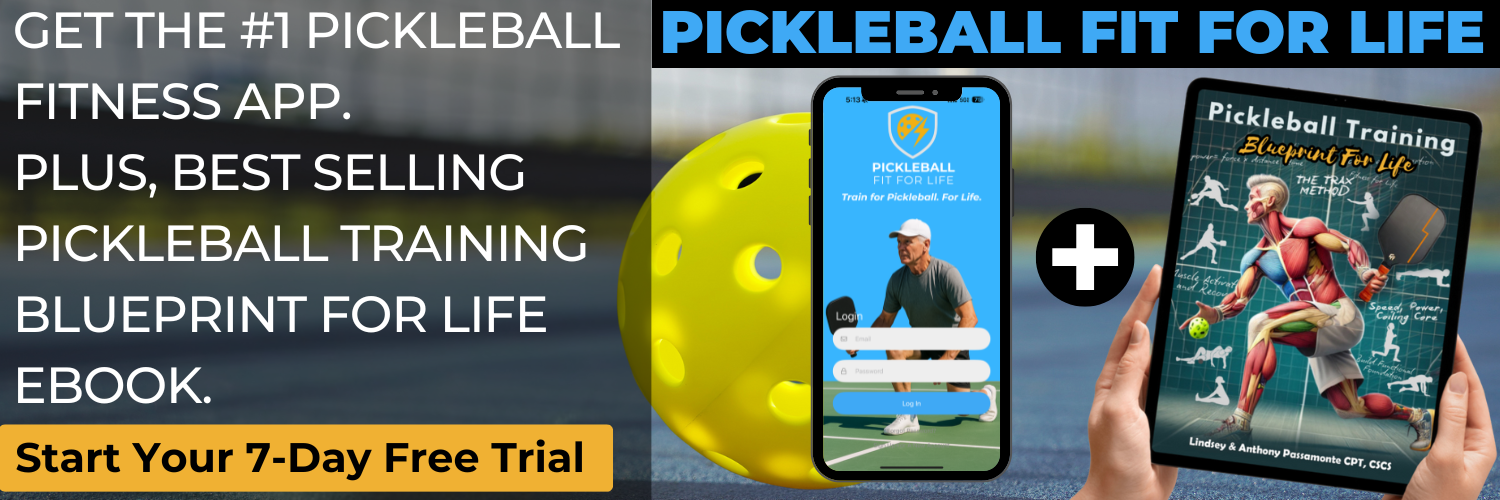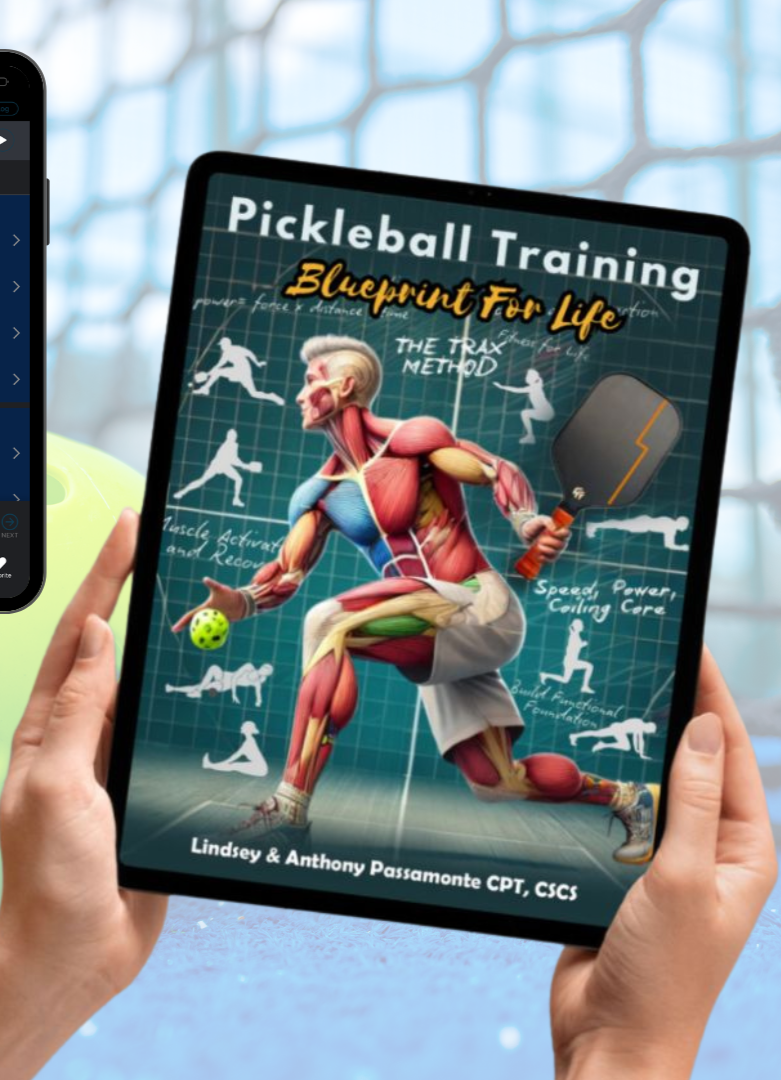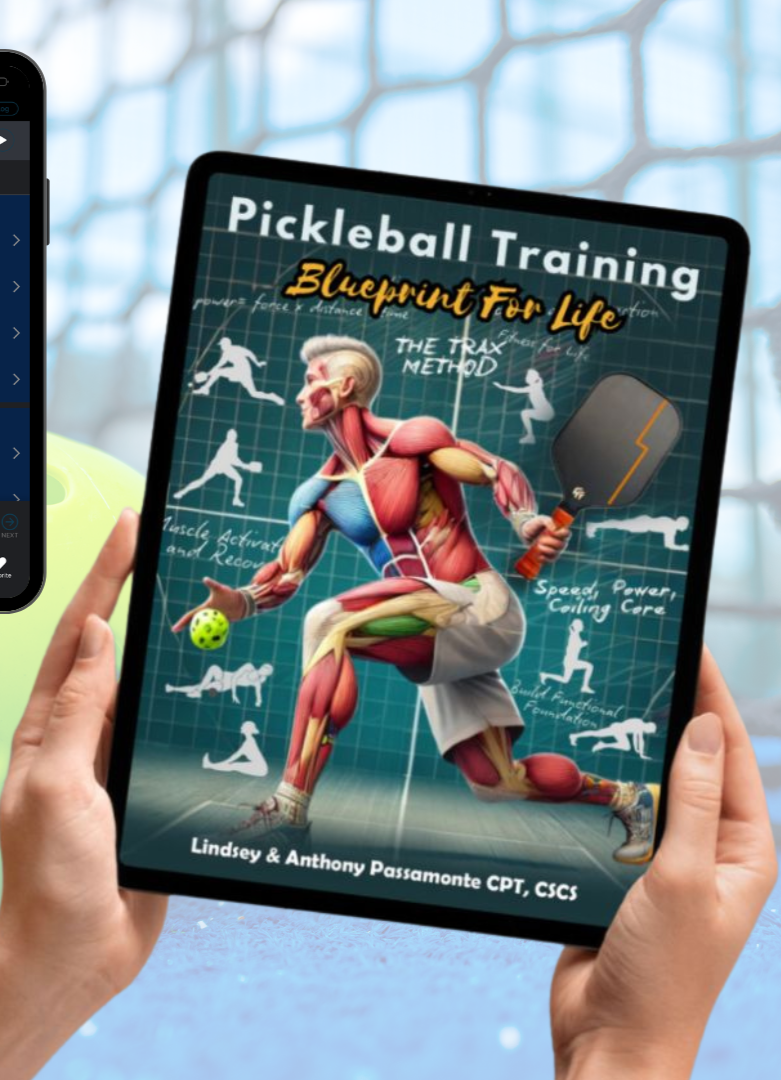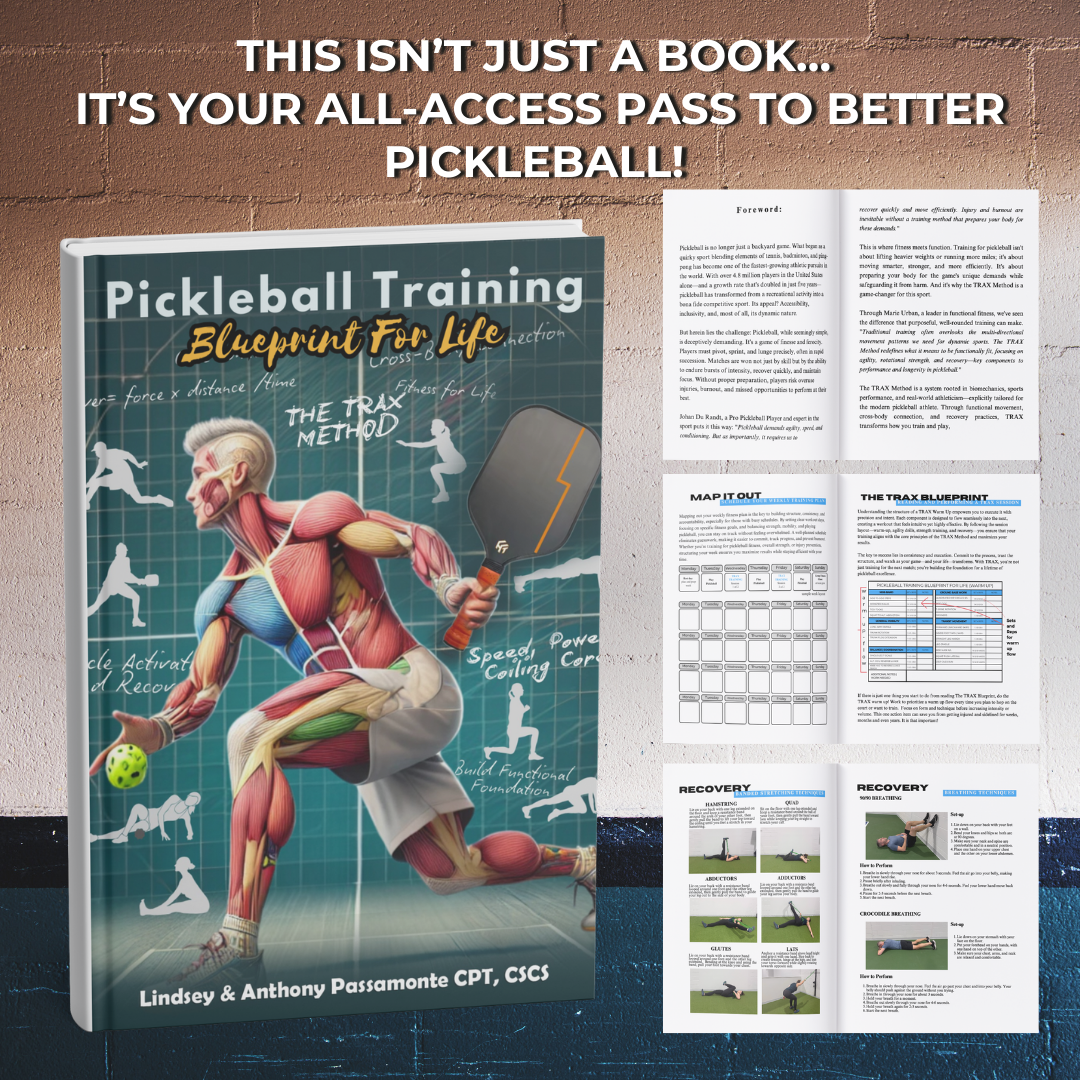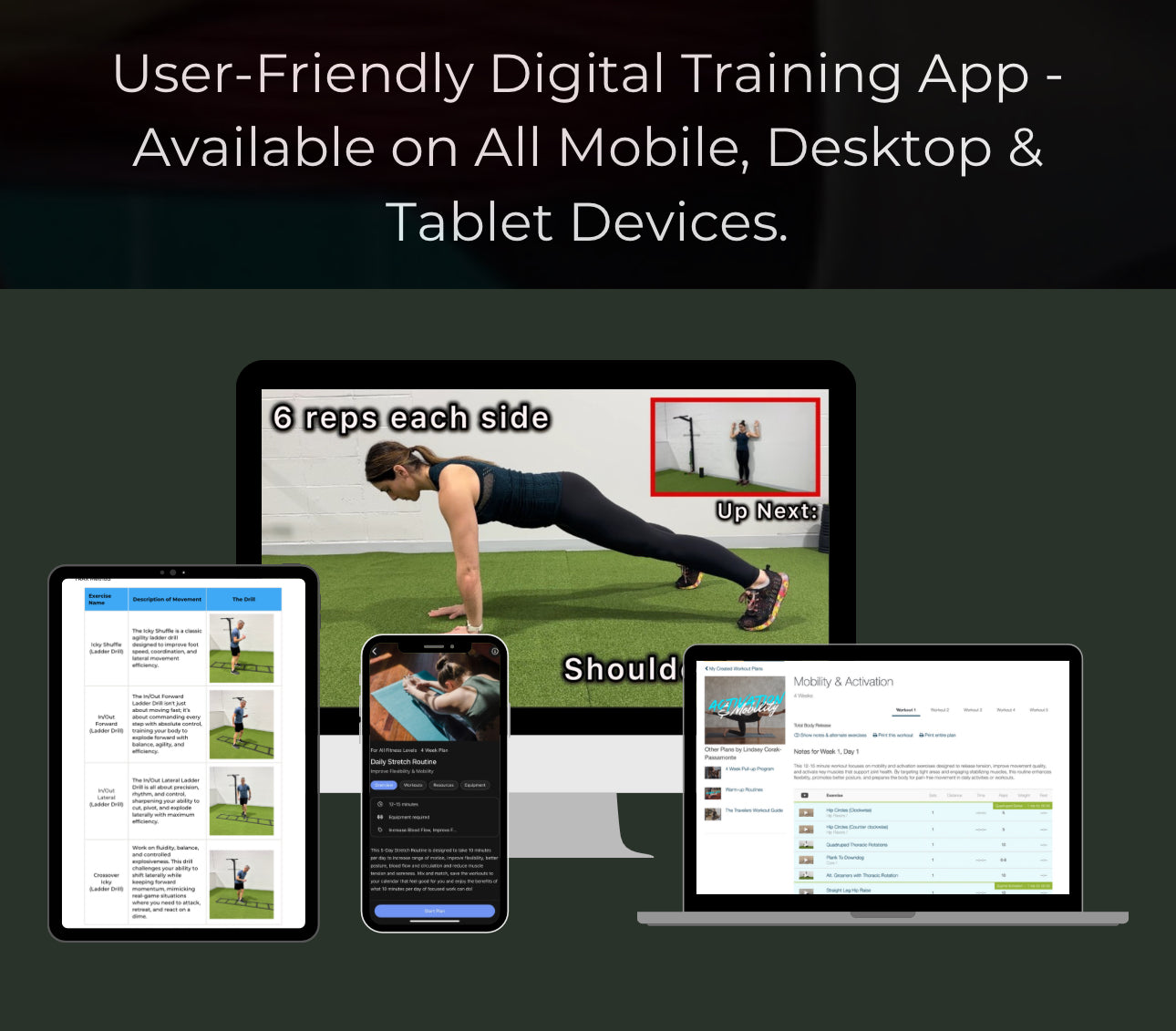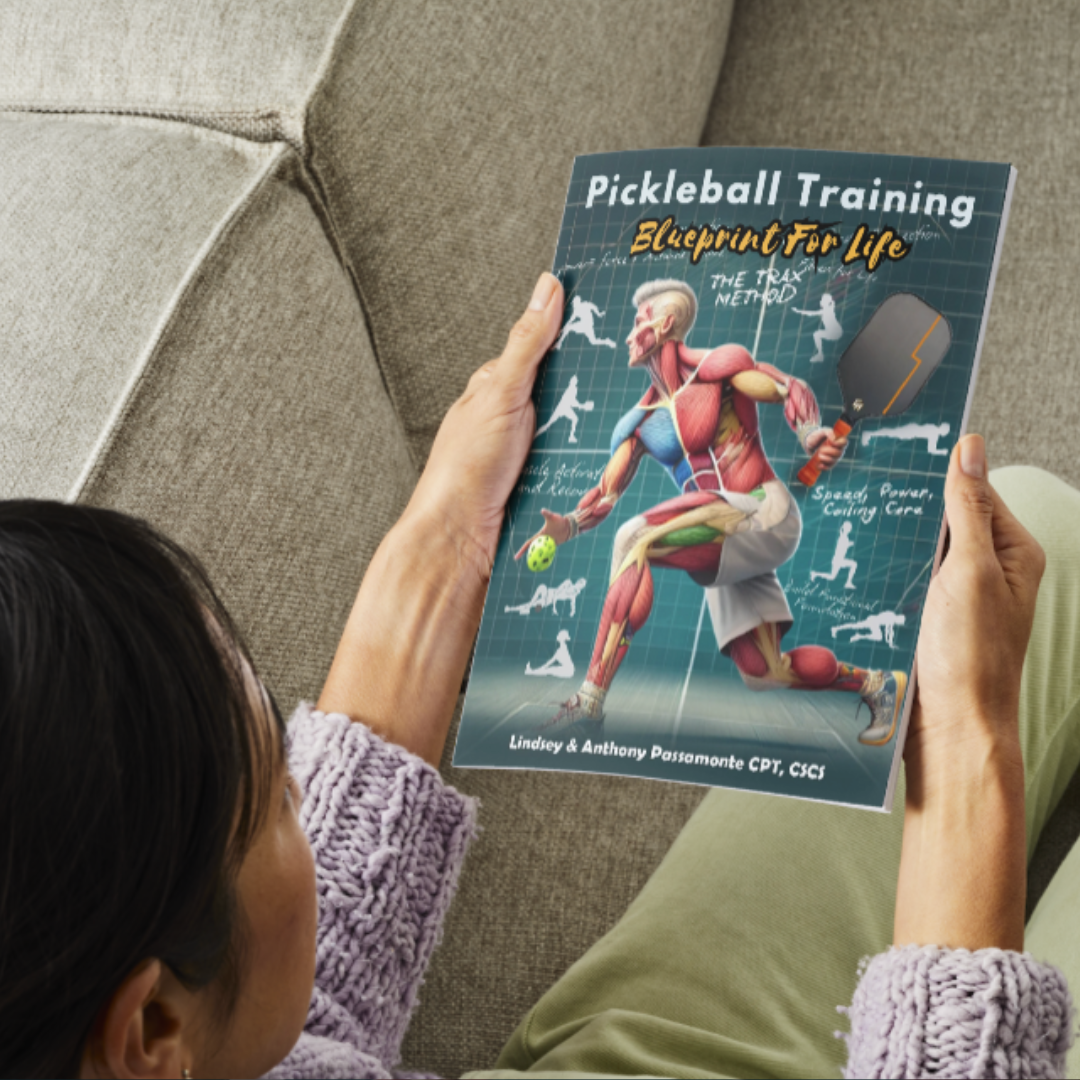Most injuries aren’t accidents. They’re consequences.
They’re the result of muscles that are either overused or underdeveloped. And sometimes, they’re both—creating the perfect storm for injury.
In a fast-paced, rotational, and reactive sport like pickleball, understanding this principle isn’t just helpful—it’s essential if you want to play pain-free and perform at your best.
⸻
The Muscle Imbalance Problem: Overused vs. Underdeveloped
Your muscles don’t work in isolation. They work in integrated chains and slings—coordinated systems designed to transfer force across your body efficiently. When one link in that chain is weak or overworked, another part has to compensate—and that’s when injuries start showing up.
Let’s break it down with a common and overlooked example:
The Glute-Shoulder Connection: A Real-Life Pickleball Problem
Think about this:
A right-handed pickleball player is lunging forward and reaching to make a forehand shot. This movement requires coordination between the left glute (which helps drive power from the ground) and the right shoulder (which stabilizes and controls the arm during the reach).
This is called a posterior oblique sling—a powerful fascial and muscular connection that runs diagonally from the glute on one side of the body to the opposite-side shoulder through the thoracolumbar fascia and core.
Now here’s where things go wrong:
• If the left glute is underdeveloped or inactive, it can’t effectively initiate power or stabilize the pelvis.
• That forces the right shoulder and upper back to work harder to control the movement—often resulting in chronic shoulder overuse or irritation.
• Meanwhile, because the glute isn’t doing its job, other structures like the lower back or the knee might step in too—leading to a cascade of compensations that increase injury risk even more.
This is how a player ends up with:
• A “mystery” shoulder injury they think came from overplaying…
• Back tightness that flares up during lunges or quick changes of direction…
• Or chronic knee pain that no brace seems to fix.
The root cause? A glute that never got strong enough in the first place.
⸻
Injuries Are Preventable When Strength Training Is Purposeful
Too many pickleball players assume that practicing their skills or playing more games is enough. It’s not.
Skill without strength is a liability.
Your body needs the structural support to handle the explosive, rotational, and lateral demands of the game. Without that foundation, you’re constantly at risk of:
• Muscle strains
• Tendonitis
• Joint instability
• Energy leaks that steal your power and slow your game
⸻
How Strength Training Supports Pickleball Performance
Smart, functional strength training prepares the body for exactly how it needs to move on the court.
When done right, it helps you:
• Activate and strengthen glutes to stabilize the hips, protect the knees, and power rotational movement
• Mobilize and stabilize shoulders to prevent overuse injuries and improve reach and control
• Integrate movement across the entire kinetic chain so you’re more efficient, more powerful, and less prone to injury
And equally important—recovery allows your tissues to repair and adapt. Without it, even the best training can backfire.
⸻
The Bottom Line: Movement Quality Matters
In pickleball, performance and injury prevention go hand-in-hand. If you’re only focusing on your shots, your serves, or your footwork—but you’re neglecting strength training and recovery—you’re missing the most important piece of the puzzle.
So next time you hit the court, ask yourself:
Are my muscles supporting my movement—or sabotaging it?
Because you can’t outplay poor movement patterns.
And you definitely can’t out-skill a body that’s breaking down.
⸻
Want to train smarter and build a body that moves with power and purpose?
Our [Pickleball Training Blueprint for Life] is designed specifically for players like you—blending strength, mobility, and recovery into one complete system.
Grab your copy today and play the long game—stronger, safer, and better than ever.

